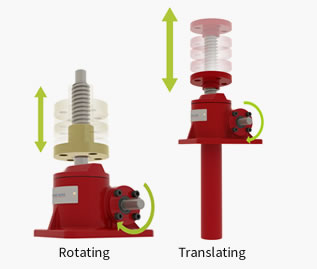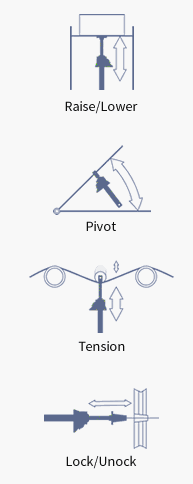
Screw jacks are essential components in automated machinery. Safety and legislative concerns drive the automation of handling and lifting of heavy loads, particularly in regions which have developed workplace and health and safety legislation.
The trend to electromechanical actuation from hydraulic actuation.
Screw jacks usually operate in high-load applications. The competing technology at high loads tends to be hydraulics; however, hydraulics are less energy-efficient than electro-mechanical actuation provided by screw jacks. Hydraulic systems waste energy as the fluid circulates at constant pressure, regardless of the amount of work required to be carried out by hydraulic positioning. A hydraulic jack or ram requires a constant pressure to maintain its position when holding a load in place. By contrast, an electric motor used to power a screw jack uses energy only when it drives the load to a required position.
The advantages of electro-mechanical over hydraulic can be summarized by:
